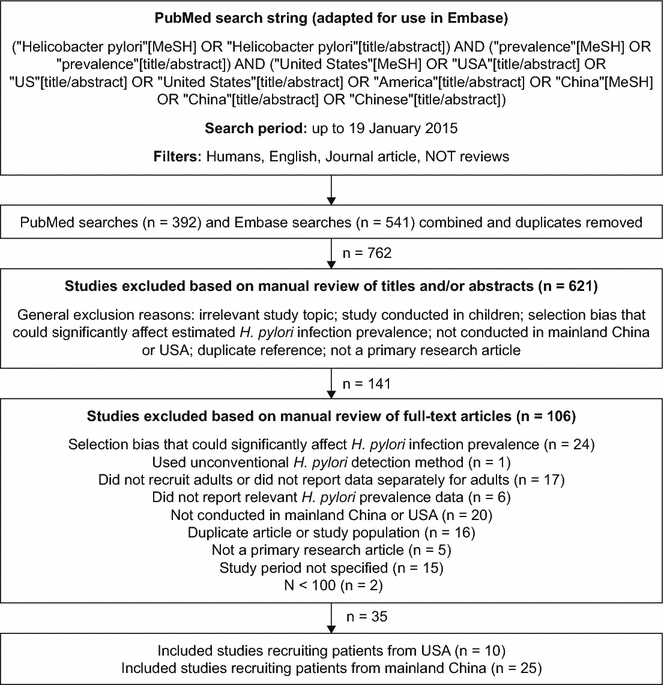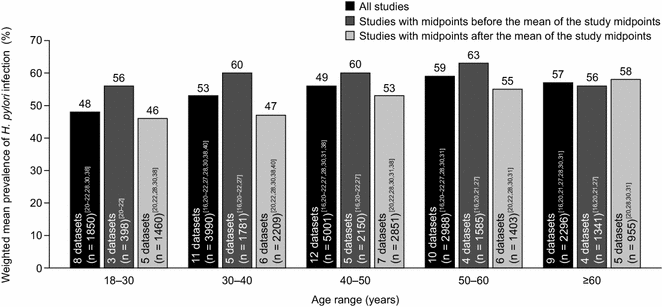Systematic review of time trends in the prevalence of Helicobacter pylori infection in China and the USA
- PMID: 26981156
- PMCID: PMC4791971
- DOI: 10.1186/s13099-016-0091-7
Systematic review of time trends in the prevalence of Helicobacter pylori infection in China and the USA
Abstract
It has been suggested that the prevalence of Helicobacter pylori infection has stabilized in the USA and is decreasing in China. We conducted a systematic literature analysis to test this hypothesis. PubMed and Embase searches were conducted up to 19 January 2015. Trends in the prevalence of H. pylori infection over time were assessed by regression analysis using Microsoft Excel. Overall, 25 Chinese studies (contributing 28 datasets) and 11 US studies (contributing 11 datasets) were included. There was a significant decrease over time in the H. pylori infection prevalence for the Chinese studies overall (p = 0.00018) and when studies were limited to those that used serum immunoglobulin G (IgG) assays to detect H. pylori infection (p = 0.014; 20 datasets). The weighted mean prevalence of H. pylori infection was 66 % for rural Chinese populations and 47 % for urban Chinese populations. There was a significant trend towards a decreasing prevalence of H. pylori infection for studies that included only urban populations (p = 0.04; 9 datasets). This trend was no longer statistically significant when these studies were further restricted to those that used serum IgG assays to detect H. pylori infection, although this may have been because of low statistical power due to the small number of datasets available for this analysis (p = 0.28; 6 datasets). There were no significant trends in terms of changes in the prevalence of H. pylori infection over time for studies conducted in the USA. In conclusion, the prevalence of H. pylori infection is most likely decreasing in China, due to a combination of increasing urbanization, which we found to be associated with lower H. pylori infection rates, and possibly also decreasing rates of H. pylori infection within urban populations. This will probably result in a gradual decrease in peptic ulcer and gastric cancer rates in China over time.
Keywords: China; Helicobacter pylori; Prevalence; Time trends; USA.
Figures






References
Publication types
LinkOut - more resources
Full Text Sources
Other Literature Sources

